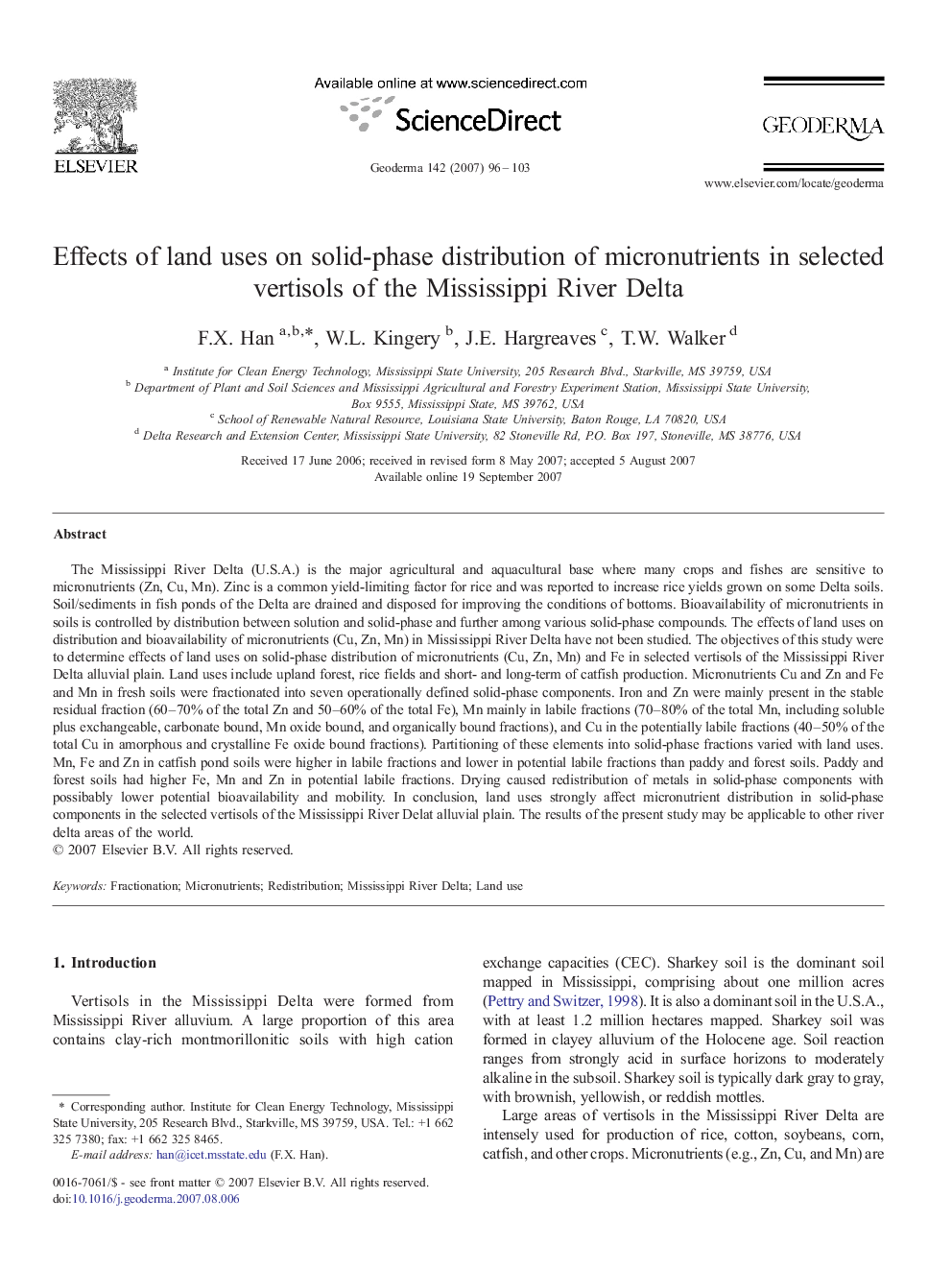| Article ID | Journal | Published Year | Pages | File Type |
|---|---|---|---|---|
| 4575300 | Geoderma | 2007 | 8 Pages |
The Mississippi River Delta (U.S.A.) is the major agricultural and aquacultural base where many crops and fishes are sensitive to micronutrients (Zn, Cu, Mn). Zinc is a common yield-limiting factor for rice and was reported to increase rice yields grown on some Delta soils. Soil/sediments in fish ponds of the Delta are drained and disposed for improving the conditions of bottoms. Bioavailability of micronutrients in soils is controlled by distribution between solution and solid-phase and further among various solid-phase compounds. The effects of land uses on distribution and bioavailability of micronutrients (Cu, Zn, Mn) in Mississippi River Delta have not been studied. The objectives of this study were to determine effects of land uses on solid-phase distribution of micronutrients (Cu, Zn, Mn) and Fe in selected vertisols of the Mississippi River Delta alluvial plain. Land uses include upland forest, rice fields and short- and long-term of catfish production. Micronutrients Cu and Zn and Fe and Mn in fresh soils were fractionated into seven operationally defined solid-phase components. Iron and Zn were mainly present in the stable residual fraction (60–70% of the total Zn and 50–60% of the total Fe), Mn mainly in labile fractions (70–80% of the total Mn, including soluble plus exchangeable, carbonate bound, Mn oxide bound, and organically bound fractions), and Cu in the potentially labile fractions (40–50% of the total Cu in amorphous and crystalline Fe oxide bound fractions). Partitioning of these elements into solid-phase fractions varied with land uses. Mn, Fe and Zn in catfish pond soils were higher in labile fractions and lower in potential labile fractions than paddy and forest soils. Paddy and forest soils had higher Fe, Mn and Zn in potential labile fractions. Drying caused redistribution of metals in solid-phase components with possibably lower potential bioavailability and mobility. In conclusion, land uses strongly affect micronutrient distribution in solid-phase components in the selected vertisols of the Mississippi River Delat alluvial plain. The results of the present study may be applicable to other river delta areas of the world.
